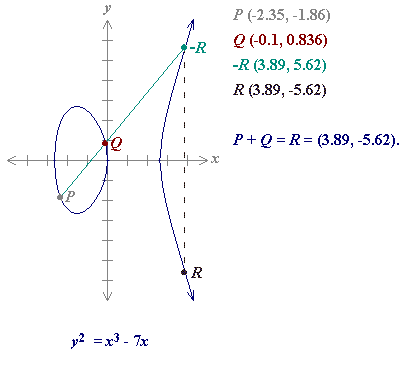P + Q = R is the additive property defined geometrically.
Elliptic curve groups are additive groups; that is, their basic function is addition. The addition of two points in an elliptic curve is defined geometrically.
The negative of a point P = (xP,yP) is its reflection in the x-axis: the point -P is (xP,-yP). Notice that for each point P on an elliptic curve, the point -P is also on the curve.
Adding distinct points P and Q
Suppose that P and Q are two distinct points on an elliptic curve, and the P is not -Q. To add the points P and Q, a line is drawn through the two points. This line will intersect the elliptic curve in exactly one more point, call -R. The point -R is reflected in the x-axis to the point R. The law for addition in an elliptic curve group is P + Q = R. For example:
